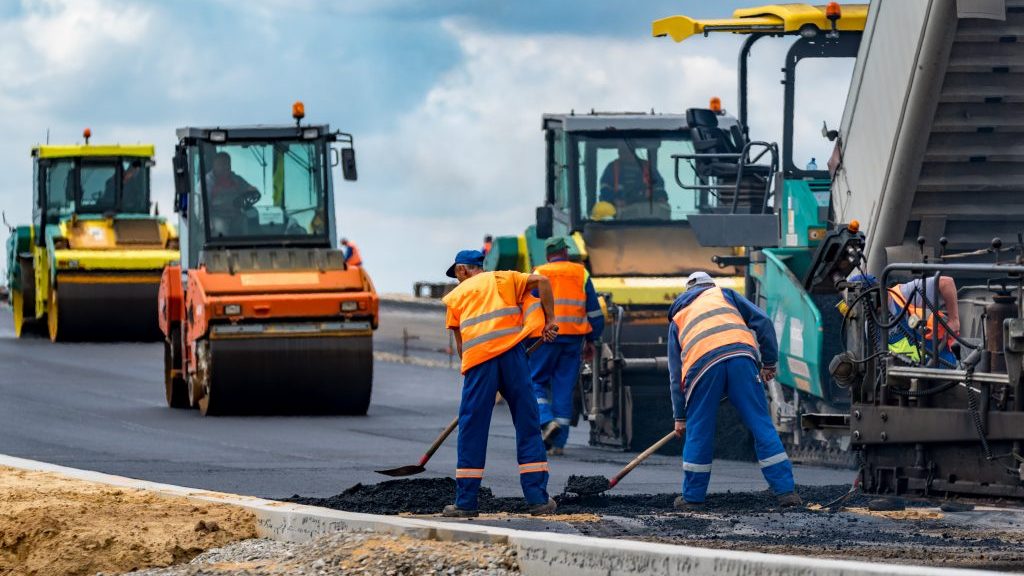Although taking the audience briefly down a construction history memory lane, the keynote speaker at the Ontario Asphalt Pavement Council’s (OAPC) recent fall seminar also told his listeners to look to the future when it comes to choosing asphalt mix.
“It’s time to boldly switch from Marshall mix to Superpave,” said Engtec Consulting Inc. principal Salman Bhutta in his Future of Quality-Performing Asphalt in Ontario talk.
is used exclusively by the Ontario Ministry of Transportation, the Region of York and the City of Toronto. Still, other municipalities continue to specify Marshall mix, he said.
“It provides a familiar terrain for engineers and contractors alike in the domain of asphalt mix design,” he said.
However, while offering numerous merits, the Marshall mix design system may fall short in “holistically” addressing important durability concerns such as cracking and fatigue, he said.
A major difference between the two mixes, although there are others, is the compaction process in laboratory testing.
The asphalt compaction process effectively locks together the asphalt cement and aggregate particles that together form the pavement.
With the Marshall method, compaction is achieved by using a drop hammer (also known as the Marshall Hammer).
Under the Superpave system, mix design in the laboratory is conducted using a gyratory compactor which simulates compaction in the field.
As part of his detailed analysis and comparison of the two systems, Bhutta emphasized Superpave mixes are closely related to conventional Marshall mixes as specified in the provincial standard OPSS. Muni 1151.
He began the presentation with a brief history of asphalt. That history goes back to the 1890s when a handful of American contractors began using a mix of asphalt cement with sand and other materials.
A few other mix design changes followed in the post-Fist World War era.

Engtec
Consulting Inc.
Then, in the 1930s, there was a major evolution with the introduction of the Marshall mix on road projects in Mississippi.
It’s named after Bruce Marshall of that state’s department of highways who developed it.
In 1943 the U.S. Corp of Engineers adopted Marshall’s system for use on Second World War airfields. In the post-war era it was “civilianized” for use by state highway departments and became the prevalent asphalt mix throughout North America.
In the past 25 to 30 years, however, there has been marked transition to Superpave. That change started with the launch of the five-year $50-million Strategic Highway Research Program in the United States in 1987. The mandate of the study was “to provide an increased understanding of the chemical and physical properties in asphalt cement and asphalt concrete.”
The study led to the adoption of the Superpave mix design in the United States, now widely used there.
Its first application in Ontario was a Ministry of Transportation pilot project in 1997 on a stretch of Highway 17 in the Petawawa area.
“This (the project) success forged a path for the deployment of a staggering 700,000 tonnes of Superpave mix in 2002, subsequently swelling to one million tonnes in 2003.”
The Superpave method has now emerged as the predominant choice for most agencies in Ontario, he said.
In making the transformation to 100-per-cent implementation of Superpave, there are some steps that have to be made. They include a need for increased training and inter-laboratory correlations to achieve uniformity in design and quality/control/quality assurances, said Bhutta.
As well, he recommended owners, consultants and contractors make full use of a “new sweep” of performance graded asphalt cement and mix testing equipment as well as new or improved performance testing tools. They include the Hamburg Rut Wheel, the Disk-Shaped Compact, and the Semi-Circular Bend tests.
However, “with an established history in Ontario,” Superpave does not require strategic investments in training and equipment.
Addressing the issue of municipal “hesitancy” to specify Superpave, Bhutta said road contractors can play a vital role in overcoming that reluctance by stressing that they “have already been acclimated and transitioned to Superpave mixes in Ontario.”



Recent Comments
comments for this post are closed